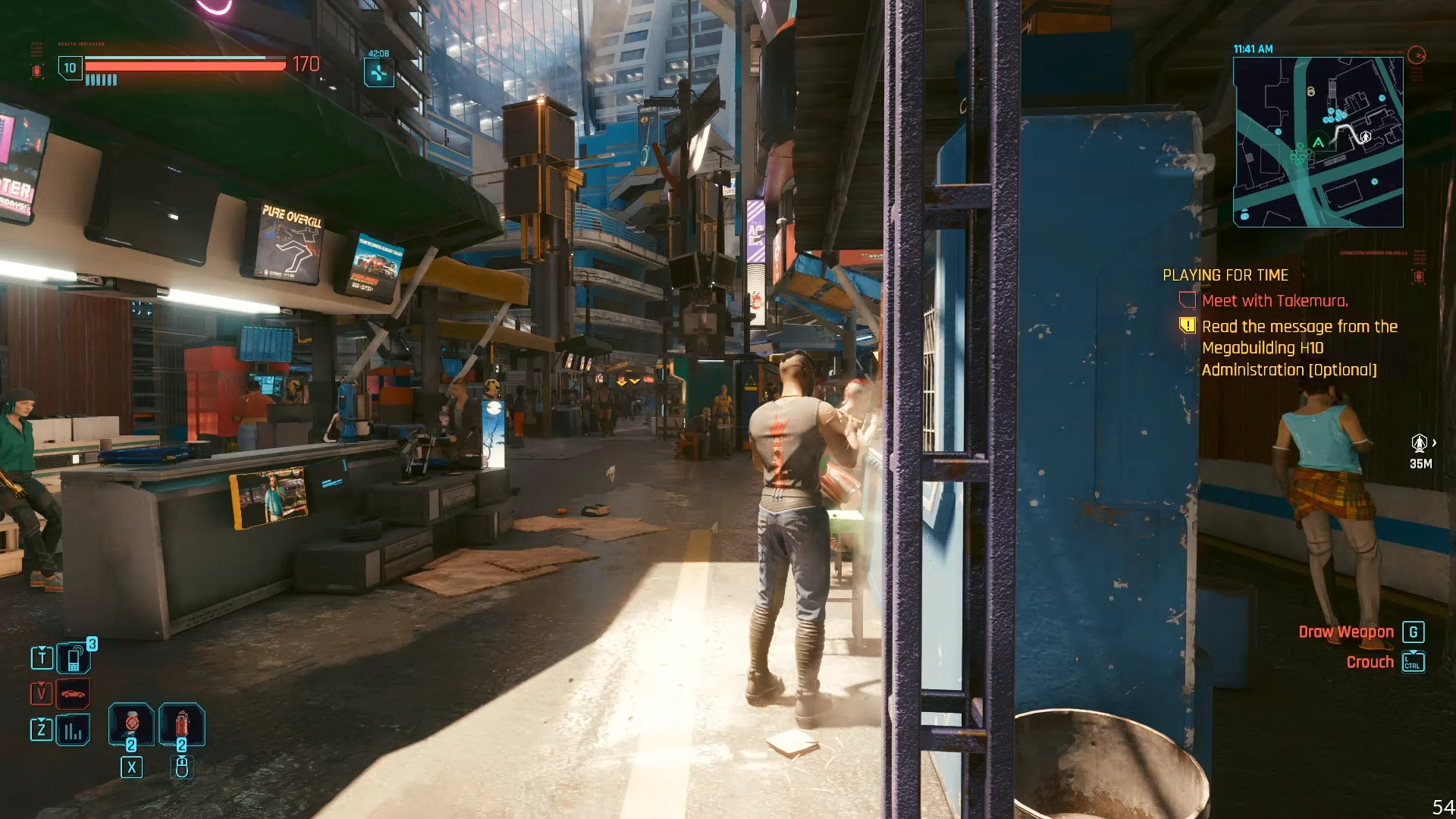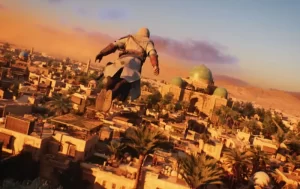Cyberpunk 2077 has evolved into one of the most visually impressive games on the market, especially with the introduction of ray tracing technology. However, enabling ray tracing mode often comes at a cost—players have reported frequent frame drops and occasional crashes, even on high-end systems.
These performance issues can ruin immersion and hinder gameplay, especially during action-heavy scenes or while exploring the neon-lit streets of Night City.
This guide will walk you through the most effective solutions to fix frame drops and crashes in Cyberpunk 2077 when ray tracing is enabled. From system requirements and driver updates to advanced graphics settings and stability tweaks, each method is geared toward optimizing performance without compromising visual fidelity.
Understanding Ray Tracing and Its Demands
Ray tracing is a rendering technique that simulates realistic lighting, shadows, and reflections. It demands significantly more GPU power compared to traditional rasterization, which can strain even powerful hardware.
| Ray Tracing Feature | Impact on Performance | Visual Benefit |
|---|---|---|
| Ray-traced reflections | High | Realistic mirror-like surfaces |
| Ray-traced shadows | Medium to High | Accurate soft and directional shadows |
| Ray-traced global illumination | Very High | Lifelike lighting and ambiance |
When all three are enabled, even GPUs like the RTX 3080 or RX 7900 XTX can struggle to maintain stable frame rates at high resolutions.
Minimum and Recommended System Specs for Ray Tracing
Before applying any fix, ensure your system meets the hardware baseline for ray tracing in Cyberpunk 2077.
| Component | Minimum (Ray Tracing Low) | Recommended (Ray Tracing Ultra) |
|---|---|---|
| GPU | RTX 2060 / RX 6700 XT | RTX 3080 / RX 7900 XT |
| CPU | Intel i7-6700 / Ryzen 5 3600 | Intel i9-9900K / Ryzen 7 5800X |
| RAM | 16 GB | 32 GB |
| Storage | SSD (mandatory) | NVMe SSD preferred |
| Resolution | 1080p | 1440p / 4K with DLSS/FSR |
If your hardware is below or barely meets the requirements, ray tracing may cause instability no matter the settings.
Step-by-Step Fixes for Frame Drops and Crashes
1. Update GPU Drivers
Outdated drivers are a common cause of instability and frame drops in graphically intense games.
- NVIDIA users: Use GeForce Experience to install the latest Game Ready Driver for Cyberpunk 2077.
- AMD users: Use AMD Adrenalin Software to update to the latest stable release.
Always opt for WHQL-certified drivers over beta versions unless troubleshooting a specific issue.
2. Enable DLSS or FSR
DLSS (NVIDIA) and FSR (AMD) use AI upscaling to maintain visual quality while reducing rendering load.
Recommended DLSS Settings (for NVIDIA GPUs):
| Resolution | GPU Tier | DLSS Mode |
|---|---|---|
| 1080p | RTX 2060–2070 | Performance |
| 1440p | RTX 3060–3070 Ti | Balanced |
| 4K | RTX 3080 and up | Quality |
FSR works similarly for AMD cards and should be enabled under the video settings for comparable performance gains.
3. Adjust Ray Tracing Settings Individually
Instead of enabling all ray tracing features at once, enable them incrementally to identify the one causing issues.
Suggested Ray Tracing Order of Priority:
- Ray-traced shadows — moderate performance impact.
- Ray-traced reflections — heavy impact on FPS.
- Ray-traced global illumination — very taxing; disable first if needed.
By selectively disabling high-impact features, you can retain much of the visual experience while reducing crashes.
4. Lower Non-Ray Tracing Graphics Settings
Balancing ray tracing with other demanding settings is crucial.
| Setting | Suggested Value |
|---|---|
| Texture Quality | High (if VRAM allows) |
| Volumetric Clouds | Medium or Low |
| Crowd Density | Low |
| Screen Space Reflections | Off (replaced by RT) |
| Cascaded Shadows | Medium |
These adjustments help offload GPU and CPU resources, improving stability.
5. Allocate More Virtual Memory (Windows)
Cyberpunk 2077 can consume a large amount of memory, especially with ray tracing. If you’re facing crashes, increasing virtual memory (pagefile) may help.
How to Increase Pagefile:
- Go to System Properties > Advanced > Performance > Settings.
- Click Advanced > Virtual Memory > Change.
- Uncheck “Automatically manage” and set custom size:
- Initial Size: 8192 MB
- Maximum Size: 16384 MB
Restart your PC after making changes.
6. Disable Background Applications
Heavy background processes such as Discord overlays, Chrome tabs, or recording software (OBS) can conflict with Cyberpunk’s rendering pipeline.
- Use Task Manager to disable unnecessary apps before launching the game.
- Set Cyberpunk2077.exe to High Priority in Task Manager for performance gain.
7. Verify Game Files or Reinstall
Corrupted game files can cause both frame drops and crashes.
- Steam/GOG/Epic: Use the platform’s “Verify Integrity of Game Files” feature.
- If persistent issues remain, consider a clean reinstall of the game on an SSD.
8. Apply Known Community Fixes
Modding communities and technical forums have uncovered some practical fixes:
- Disable GOG Galaxy overlay (if playing through GOG)
- Use launch parameters like -dx12 or -skipIntro for better load handling
- Install community performance patches (with caution)
Always back up save files before applying third-party fixes or mods.
Troubleshooting Matrix
| Problem | Likely Cause | Fix Suggestion |
|---|---|---|
| FPS drops during combat scenes | High RT load, crowd density | Lower crowd density, use DLSS Balanced |
| Crash on loading save | Corrupt save or memory overload | Reduce mods, expand virtual memory |
| Game stuttering with DLSS On | CPU bottleneck or bad driver | Update drivers, lower background load |
| Stable but low frame rate | Over-taxed GPU | Use DLSS Performance, reduce RT settings |
Final Thoughts
Cyberpunk 2077 offers one of the most visually rich open-world experiences available today, especially when ray tracing is enabled. However, that visual fidelity requires careful system optimization to maintain stability and performance.
By combining smart use of DLSS/FSR, thoughtful graphics tuning, and hardware maintenance, most players can enjoy a ray-traced Night City without the frustration of crashes or frame drops. With CD Projekt Red continuing to optimize the game through updates, the performance gap between beauty and smooth gameplay is slowly narrowing.
If you’re committed to enjoying Cyberpunk 2077 at its visual best, applying these steps can ensure that the only thing crashing is your in-game enemies—not your system.



